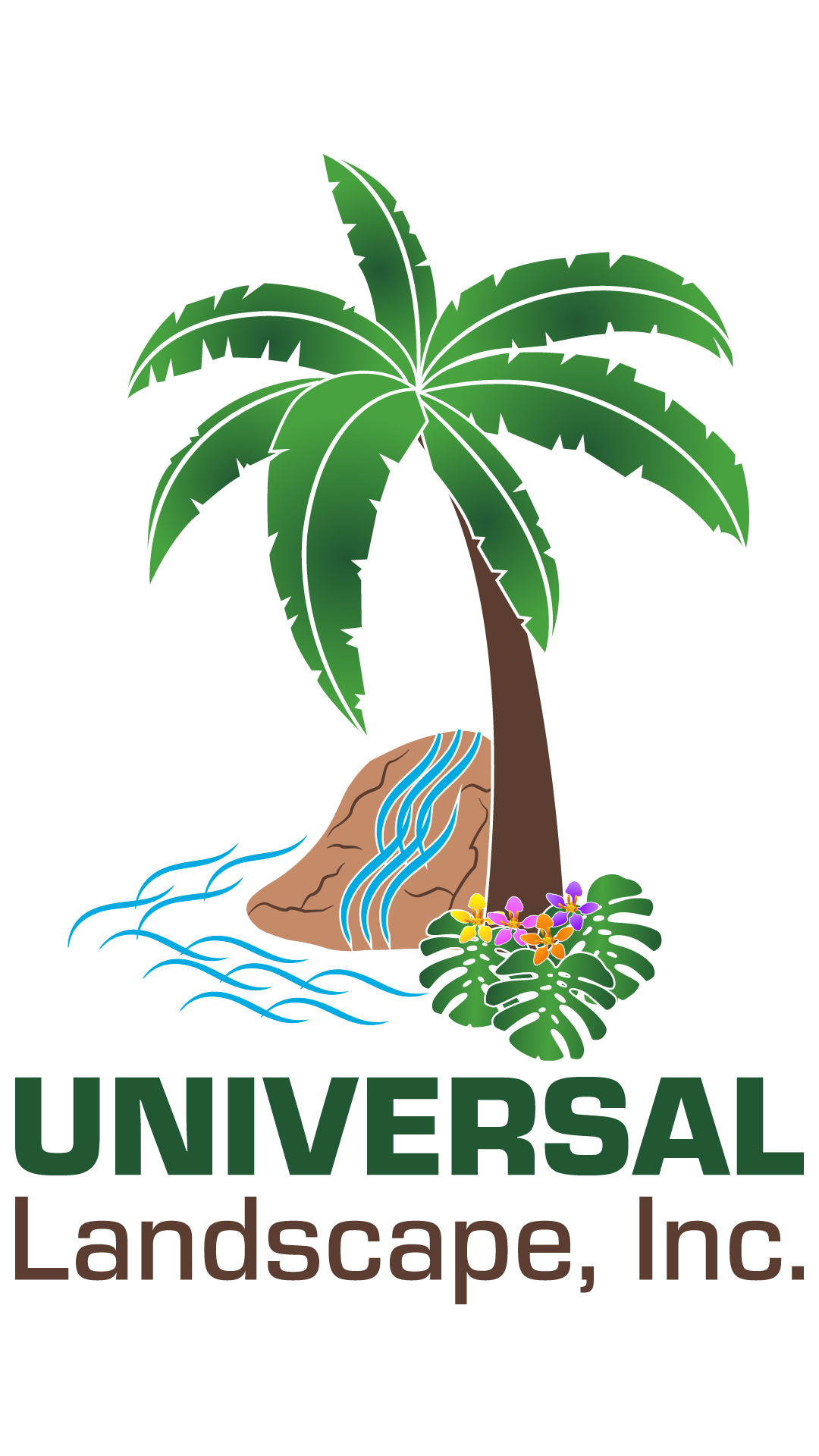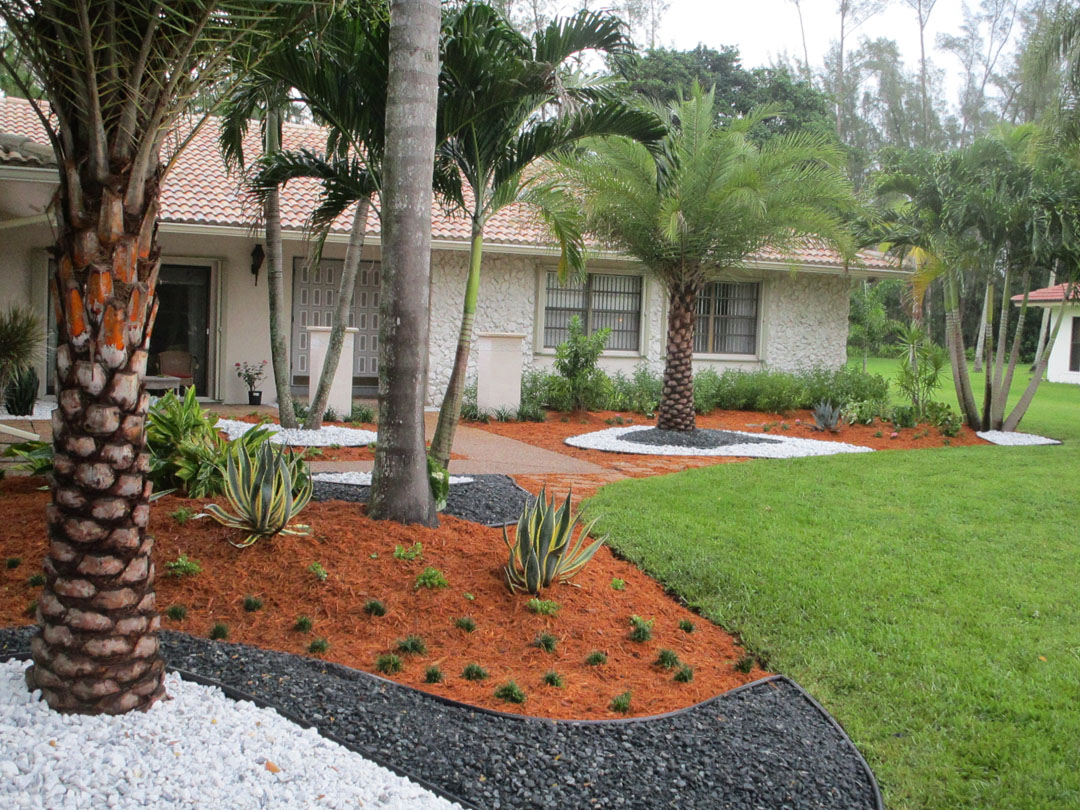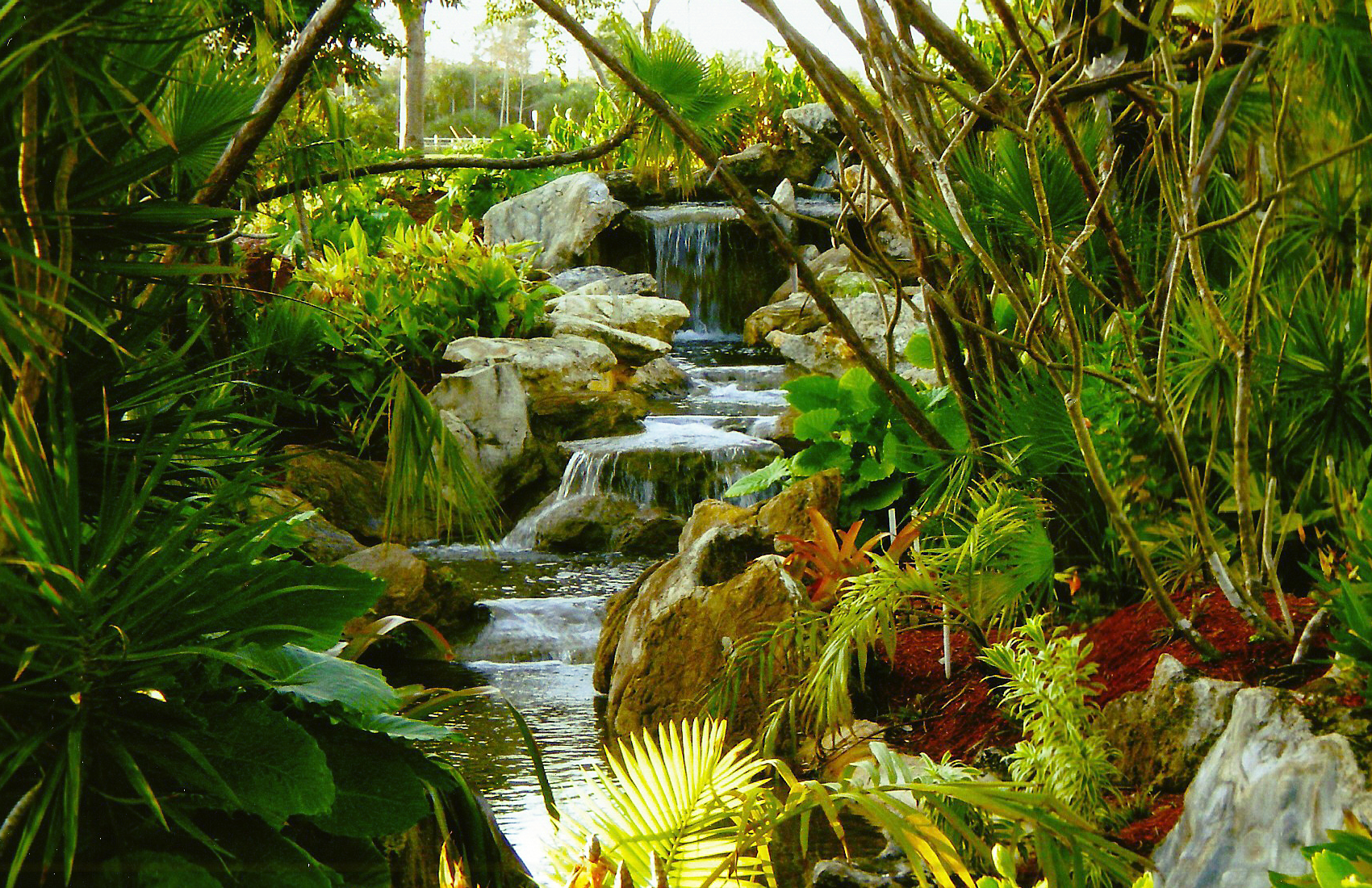Fertilization Notes
The following instructions are those we have used for over 20 years to help people establish healthy landscapes from the time of installation, and guiding through a strong landscape maturity. These instructions cover the details of how to water and fertilize from the time of installation – guiding through the stages of your landscapes maturity. Different professionals may use different fertilizer types and different methods – but the framework of how much and when to water and fertilize is general knowledge – and the foundational guide should remain generally the same – no matter the slight difference in details.
First it starts with a philosophy
Landscapes are much like children when they’re young to put it simply. The newer the installation – the more care it needs. The goal is to get the landscape strong on its own – and join in with nature the best it can as it is intended to do. Some plants and trees are more temperamental when their young – and even require a little extra attention as they age – and these should be pointed out. But the simple common sense of gardening is – “the stronger the roots – the stronger the landscape.”
A landscape is affected largely by how it is planted, the slope and drainage of the soils, as well as the soil quality. This is what we consider at the time of installation. If landscapes or even lawns are over saturated – this is a breeding ground for “root rot’ and also the attack of many insects which can be fatal to your gardens. I can’t over state the importance of drainage for your yards and gardens. As for root rot – the base of the tree or plant becomes saturated often – even standing water in some spots causes this. The roots become weaker for many species – and this inhibit’s the growth and can kill many trees, palms and plants.
As for watering to repeat that phrase so it may set in – the “Golden Rule” is : “The stronger and deeper the roots – the stronger the landscape.” This is achieved by the roots working their way downward into the soil. Roots naturally will go where the water is. If the water is constantly near the surface – the roots will grow weak and lazy as they do not have to search very far – or work their way downward into the soil to find water.
Watering Schedules
When watering it is best to water less frequently over the longer term – but more heavily when you do. Starting with a new installation – there are a few factors which may require some adjustment to the schedule depending on the sun and shade – the soil and slopes and varieties of plants, palms and trees – but a general guideline is.
Upon Installation
From the day of installation through the first three weeks – water every day. Set the sprinklers for a good 45 minutes on average and make sure that the landscape is saturated. Only water in the early mornings or early evenings as this makes for the best soaking of the landscape. When you water in the sun – more water is lost in evaporation than often goes in the ground. This also may vary with the time of year – and it is suggested both for savings on water and your power bill to install a rain sensor – so that you do not water on the days that we receive rain.
From 3 Weeks to 3 Months
This is the period of transformation. You need to watch the landscape closely during this time. The goal is to have the landscape as weaned as possible by the end of the three months. If there is a problem with the landscape plant, palm or tree upon installation – and the guidelines are kept – most often a problem will be noticed in this period if the material is sick – or there was a problem during the installation. Notify us immediately so that we may have the chance during this period to rescue and make adjustments for the material if it is possible during this time.
You might begin to water every other day at the beginning of the three week period. If it is in the middle of the summer – and the space is wide open there may be more heat on the surface area and you may need to keep watering every day. In some cases – twice a day – with a second watering as a light cooling off of 5 – 10 minutes if necessary.
In other cases – space it out to every other day – in the early mornings or early evenings for 45 minutes per zone. Make adjustments if necessary. By the end of the three month period if you can wean it back to 3 times a week – this would be ideal.
Beyond this – the long term goal is to look at nature as the natural provider for your landscape. And nature is more resilient than you might think. Ideally – you would go entire seasons without using your irrigation for your trees, palms and shrubs at all – and only use your irrigation as an extra hand during drier times. These make for the best landscapes – and by the end of the first year or second year – you should be watering only twice a week at most – and those who are able to turn their sprinklers off and only on once in a while – are the yards that are becoming zero – scaped – and will have the deeper roots.
Again – pay close attention to the material – and adjust your watering accordingly.
Lawns and flowers gardens and annuals are different than your trees, palms and shrubs – and they require watering more often. While your entire landscape may become xero scaped and only aided occasionally by irrigation – your lawn and flower gardens should be watered no more than twice a week – for a half hour to 45 minutes each time – ideally to help make the roots strong.
If you have further questions on this or any aspect of your garden – you may contact us at the number at the bottom of the page – or the Extension Service at the local Botanical Garden near you.
Fertilizing
Again when a landscape is young is the most important time to pay attention and lend a helping hand to your landscape. If it is well maintained when it is young – it has a better chance to become more independent and strong as it grows.
First 3 Years Fertilizing Schedule For all Shrubs, Trees & Palms : Four times of year to fertilize : Two weeks “give or take” of these 4 dates:
Ground Hogs Day – Memorial Day – Labor Day – Thanksgiving
Two weeks before or after these dates are optimal times to fertilize and should be done at least 3 and no more than 4 times each year for the first three years.
You may choose to keep up with three times a year as the landscape ages – and soil conditions in different towns can have an affect on what is necessary – but over the longer term – after the first few years – if you fertilize your landscape at least twice a year – you’re doing good. ( Lawns are a different story – and a separate set of instructions on its own. )
Specifics on Fertilizing
When fertilizing plants – typically a #3, #7 or even a #10 gallon plant may be well served by a good full handful of granular fertilizer – about 1 cup placed in a circle around the base. Lesco brand 8 – 10 – 10 is an old stand by – and there are others that some prefer for different special effects – but this has been around and trusted if you’re uncertain. Take the granular in your hand or cup and spread it out in a circle around the base of the plant around the “drip zone”.
The “Drip Zone” is the area close to the plant where the outer branches generally reach when it is newly installed. In the years ahead – a foot away from the base is pretty close – and can come out further and will require more fertilizer. For a palm tree with a 1 foot base at chest high : 3 to 4 cups of Lesco’s 13 – 3 – 13 will do the job. Same thing – in a circle around the base – about a foot away from the trunk of the palm itself. As the trees and shrubs grow – more fertilizer will be required.
With trees : Lesco’s 8 – 10 – 10 (the same used on the bushes can be used on the trees.) Now if the base of the tree is 3” – 5” at the caliper – (width of the trunk about chest high) then 2 – 3 cups of fertilizer should be fine in normal conditions. As there are many different types of trees and plants – some may require some additives if they are temperamental – and you should be made aware of this before installation.
Again – different gardeners, landscapers, lawn maintenance crews and nursery growers may prefer different types of fertilizers that work well – but the basics of how and when to apply them should remain the same for most. Some differences between nurseries and maintenance are the times of the release from the granulars – and this does have an effect on the frequency. Different approaches from one field to the next – but the goal is longevity in your garden – and you should keep your maintenance that way.
WARNING NOTICE !!!
Your plants and trees will tell you how they feel. They do it through the colors of their leaves and palm frons. If you see spots – its from a lack of certain nutrients – and different color variations in the leaves mean different deficiencies.
If you see stunted growth – this could be a combination of a lack of water and / or an insufficient amount of fertilizer when young. If you see YELLOWING LEAVES – and they are not the normal healthy green of that plant, palm or tree type – they are usually “yelling” for you to feed them. So pay attention from time to time – and if you have questions just call.
Thank you and I hope this helps you enjoy the most out of your landscape for the longer term.




